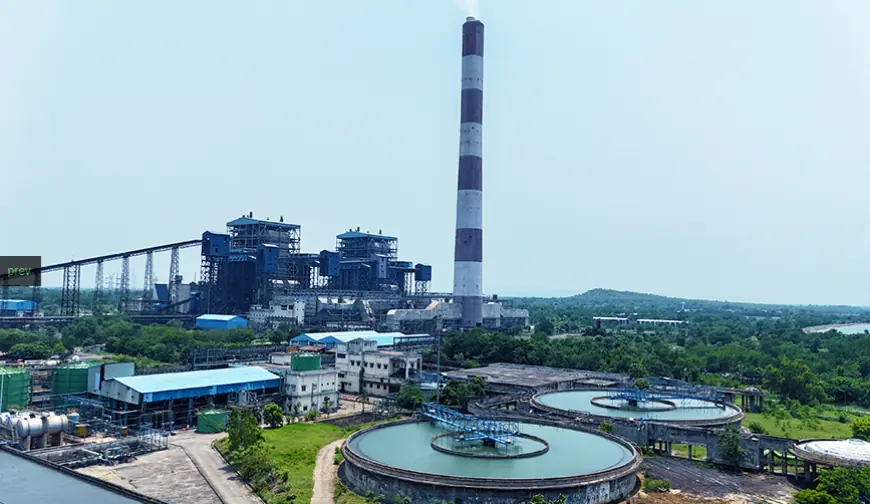Waste Heat Recovery in Thermal Power Plants: What You Should Know
Discover how Waste Heat Recovery (WHR) is revolutionising India’s thermal power sector by improving plant efficiency, reducing emissions, and supporting sustainable energy goals. Learn how companies like Jindal India Power Ltd are leading the way.

In recent years, there has been a growing emphasis on energy optimisation and reducing emissions, which has led to increased interest in waste heat recovery technologies. This approach not only enhances energy efficiency but also supports environmental sustainability efforts. Around the globe, various countries are implementing these technologies, including leading thermal power companies in India.
As India continues to advance its industrial growth, the role of thermal power plants becomes increasingly important. These facilities are responsible for a substantial portion of the country’s electricity generation. However, they also produce significant amounts of unused heat energy, which is released into the atmosphere. To address this issue, Waste Heat Recovery (WHR) has emerged as a viable solution. This strategy aims to capture and utilise the excess thermal energy, thereby improving plant efficiency, lowering emissions, and reducing fuel costs.
Why Waste Heat Matters
In a standard coal-fired power plant, only about 35–45% of the energy from the fuel is transformed into electricity. At the same time, the remainder is lost as waste heat through various sources, including exhaust gases and cooling systems. To enhance energy efficiency, technologies such as economisers, Heat Recovery Steam Generators (HRSG), and Organic Rankine Cycles (ORC) can be employed. These advancements allow plants to capture and reuse a significant portion of this lost energy. The benefits of implementing these technologies include improved overall thermal efficiency, reduced operating costs, and a decreased carbon footprint.
Waste Heat Recovery (WHR) presents a cost-effective and scalable solution for meeting energy demands and environmental standards, which is particularly important as India advances towards more sustainable and intelligent power generation.
Key Hurdles and Progress Path
Despite its clear advantages, implementing waste heat recovery in any thermal power plant in India does come with challenges. The initial investment cost can be high, especially for retrofitting older plants. There is also a need for technical know-how and regular maintenance to ensure optimal functioning of the recovery systems.
However, the long-term economic and environmental benefits outweigh the initial costs. With government incentives, public-private partnerships, and policy support, the adoption rate is expected to rise. Additionally, increasing awareness among stakeholders and energy managers is likely to accelerate the shift.
Waste Heat Recovery Technologies
Technology
-
Heat exchangers (economisers, air, preheaters)
-
HRSG
-
ORC & Kalina cycles
Function
-
Preheat feedwater or combustion air using flue gas
-
Capture turbine exhaust heat to generate steam for added power
-
Use an organic mixture to generate power from a lower temperature waste
Efficiency Impact
-
Boost plant efficiency by 1-4% cost savings and CO₂ reduction
-
Enables combined cycle configurations with 10-30% efficiency gains
-
Provide viable WHR even at moderate exhaust temperatures
India’s Need for Heat Recovery
India is home to one of the largest networks of thermal power plants globally. With coal being the dominant fuel source, the need to reduce emissions while improving efficiency has become critical. According to recent energy reports, waste heat recovery can increase overall plant efficiency by up to 10%, a significant figure considering the scale at which these plants operate.
Many of the major power plant manufacturers in India have started recognising the value of investing in waste heat recovery solutions. These measures align with India’s broader goals of transitioning toward cleaner energy while meeting the soaring energy demands of a growing population.
Spotlight on Jindal India Power Ltd
A shining example of forward-thinking is Jindal India Power Ltd, operating a 1,200 MW coal-based facility at Angul, Odisha. Since commissioning in 2015, JIPL has prioritised sustainability: adopting zero-discharge operations, minimising auxiliary consumption, and delivering a top-tier station heat rate.
Final Word
Waste heat recovery (WHR) plays a critical role in enhancing the efficiency of thermal power plants in India. By implementing WHR technology, these plants can effectively capture and utilise excess heat that would otherwise be wasted, effectively adding a new layer of energy production at no additional cost. This approach not only reduces carbon emissions but also contributes to improved energy security. In this way, WHR transforms inefficiencies into valuable opportunities for sustainable energy management.
What's Your Reaction?
 Like
0
Like
0
 Dislike
0
Dislike
0
 Love
0
Love
0
 Funny
0
Funny
0
 Angry
0
Angry
0
 Sad
0
Sad
0
 Wow
0
Wow
0

















































